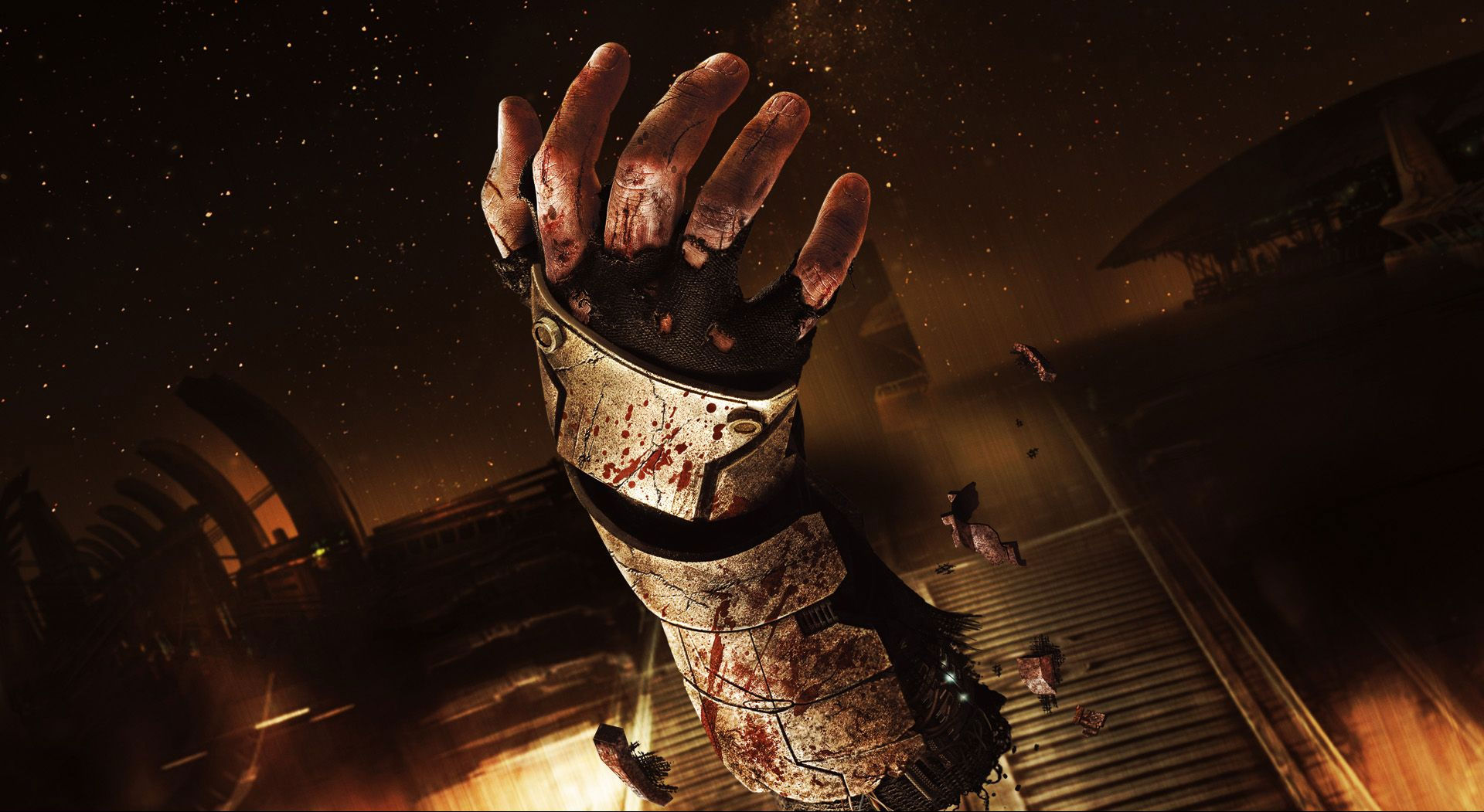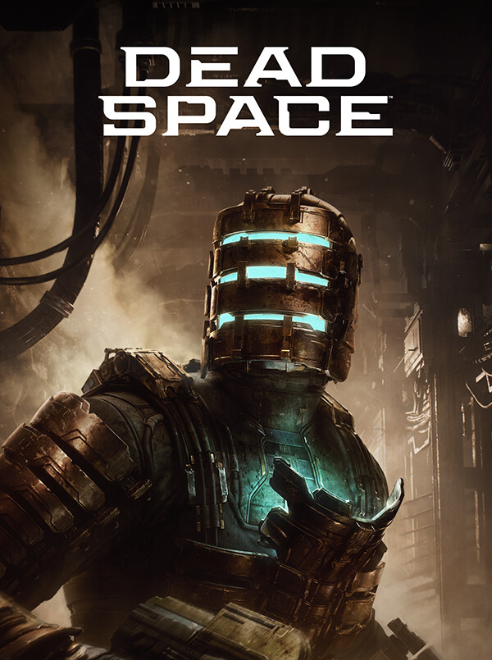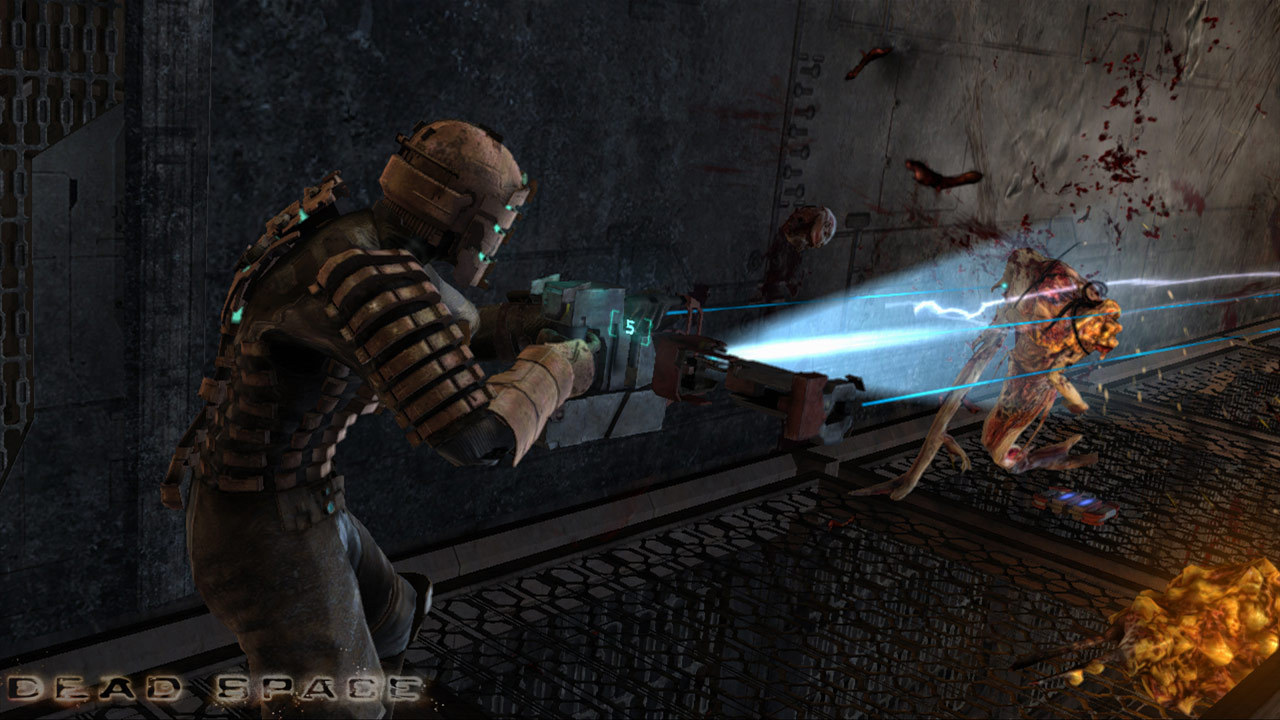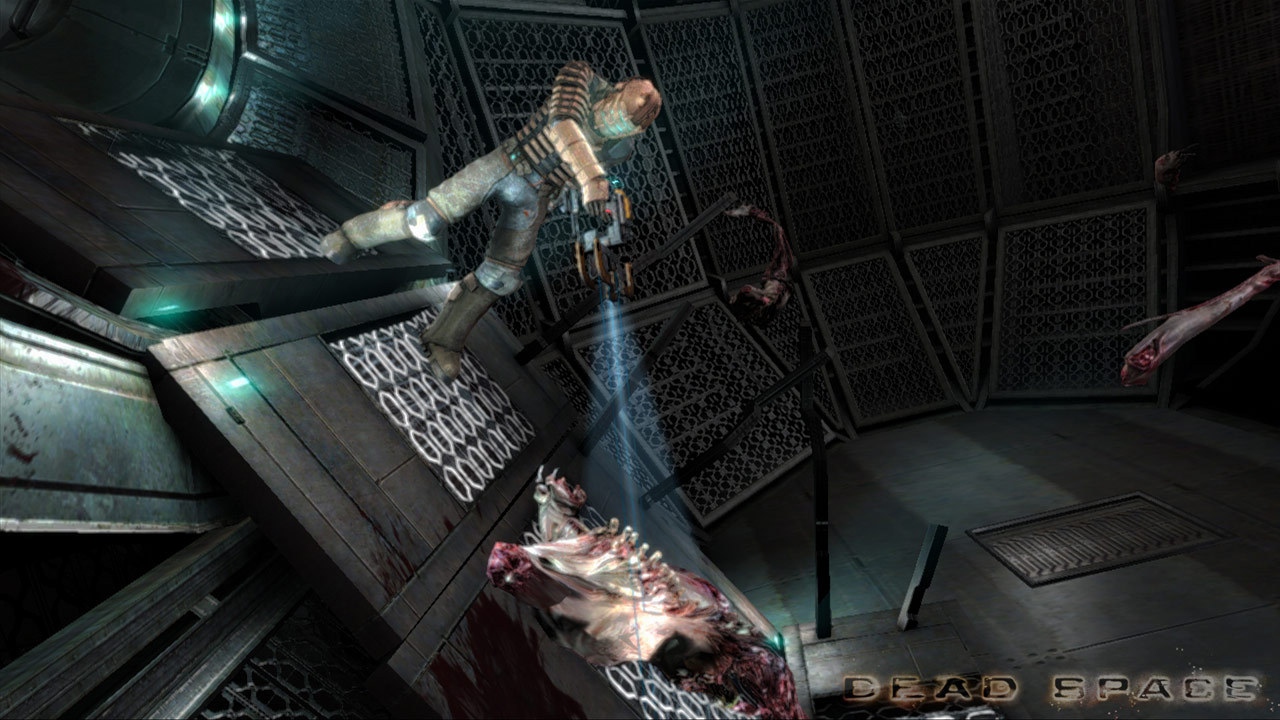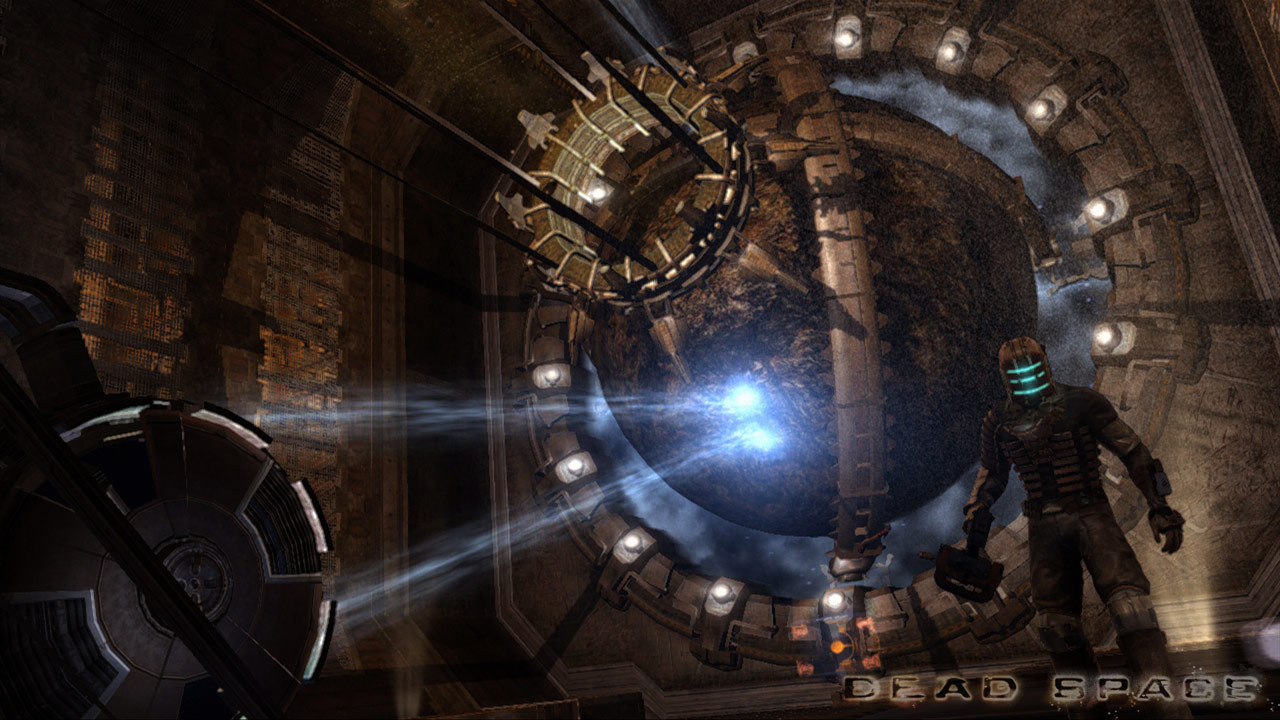Step aboard the USG Ishimura and brace yourself for a chilling voyage through a desolate spacecraft, rife with necrotic fear. The acclaimed horror game, renowned for its spine-tingling atmosphere and gripping gameplay, thrusts players into the suit of Isaac Clarke, an engineer battling the haunted corridors of space. In this comprehensive review, we delve deep into the harrowing world that has captivated gamers and horror enthusiasts alike, offering an insightful look at Dead Space’s terrifying allure.
From extraordinary graphics to adrenaline-pumping encounters with otherworldly creatures, Dead Space presents a masterclass in atmospheric tension and storytelling. We scrutinize every element, exploring what makes this interstellar nightmare such a standout title. So, whether you’re a seasoned space explorer or a newcomer eager for a fright, join us as we dissect the remnants of this cosmic horror classic and reveal its darkest secrets.
Prices for Dead Space
The Chilling Plot That Unfolds in Dead Space
Set in the eerie silence of space, Dead Space embarks on a terrifying journey aboard the mining ship, USG Ishimura. Players step into the boots of Isaac Clarke, an everyman engineer thrown into an extraordinary nightmare when the ship sends out a distress signal. The once bustling vessel has succumbed to a bloodcurdling fate, its crew transformed into hostile monstrosities known as Necromorphs through the mysterious Marker artifact.
The plot weaves a masterful tale of survival, horror, and mystery, as Clarke navigates the oppressive corridors filled with malevolent beings. As players delve deeper into the ship’s decaying confines, they uncover the ominous truth behind the alien artifact and the ship’s ghastly demise. An engulfing narrative combines with pulse-pounding gameplay to ensnare players in a web of suspense and existential dread, making Dead Space a cornerstone of interactive horror storytelling.
Innovative Gameplay Mechanics in Dead Space
Dead Space offers an immersive gameplay experience that deftly balances horror and action, creating a visceral and memorable journey. The game’s intuitive and accessible control scheme ensures that players can rapidly engage with the environment, while still maintaining a palpable sense of vulnerability crucial to the horror experience. The innovative use of strategic dismemberment as the primary combat mechanic sets it apart from traditional shooters, challenging players to adapt their approach to combat and conserve resources against relentless Necromorph onslaughts.
Despite its tension-heavy atmosphere, Dead Space succeeds in providing a rewarding gameplay loop that encourages exploration and problem-solving. Objectives revolve around repairing the crippled ship, piecing together clues, and surviving against all odds. Compared to contemporaries in the survival horror genre, Dead Space’s seamless blend of absorbing narrative, atmospheric dread, and tactical gameplay remains a benchmark, making it an essential experience for aficionados of interactive terror.
Visual Mastery: Dead Space’s Standout Graphics
Dead Space sets a high bar for visual storytelling in the horror genre, enveloping players in its meticulously crafted and claustrophobic environments. The game’s use of lighting and shadow adds layers of depth to the Ishimura’s decrepit corridors, conjuring a tangible sense of dread that rivals its contemporaries. Intricate textures coupled with dynamic lighting create an atmosphere where every flicker and shadow can feel like a breath-stopping threat lurking in the darkness.
Compared to other games of its era, Dead Space excels in crafting immersive, high-stakes environments that keep players on edge. Its graphical fidelity and art direction extend beyond mere visual appeal, contributing to an encompassing experience that enhances its narrative tension. The remarkably designed Necromorphs contrast with the cold, industrial environs, elevating the horror by showcasing grotesque detail that both revolts and fascinates, proving that Dead Space’s graphics aren’t just about visual quality—their artistry shapes the haunting allure at the heart of the game.
Standout Features of Dead Space
Among the defining features of Dead Space is its atmosphere, expertly crafted through diegetic sound design and immersive environments that pull players deep into the game’s universe. Unlike traditional survival horror games that rely heavily on a soundtrack, Dead Space eschews constant music for ambient noise and the harrowing sounds of the Ishimura, enhancing its haunting realism. This distinctive audio approach sets it apart from contemporaries by enveloping players in the isolated terror of space.
Another standout feature is the game’s minimalist interface, where all HUD elements are seamlessly integrated into the environment and Isaac Clarke’s suit. This choice maintains immersion and emphasizes narrative flow, allowing players to experience the unfolding horror without distraction. Compared to other horror titles, Dead Space also introduces novel approaches to combat through strategic dismemberment and resource management, challenging players to think critically and tactically under pressure, marking it as a pioneering force in horror gaming innovation.
Where Dead Space Falls Short
Despite its atmospheric brilliance, Dead Space is not without its flaws. One of the most noticeable drawbacks is its reliance on jump scares, which, although effective, can feel somewhat overused and predictable over time. This repetition can diminish the overall sense of horror as players become accustomed to the patterns and timing, reducing the element of surprise that’s crucial to maintaining tension.
Additionally, while the narrative is engrossingly dark, some players may find it unevenly paced, particularly in the game’s latter portions where certain plot elements may feel rushed or underdeveloped. The backtracking required to complete objectives might also detract from the experience for some, making sections of the game feel like filler rather than enhancing the storytelling. These elements, though minor in the grand scheme, serve as reminders of the challenges in maintaining a seamless blend of pacing and excitement in survival horror gaming.
System Requirements and Performance for Dead Space
Dead Space offers a solid performance across various system setups, allowing a wide range of players to step into its chilling atmosphere. Optimized to run smoothly, it delivers a consistent visual experience whether on lower or higher-end systems, ensuring gamers can enjoy its thrilling horror despite differing hardware capabilities.
Below are the minimum and recommended system requirements for playing Dead Space:
| Requirement | Minimum | Recommended |
|---|---|---|
| Operating System | Windows XP/Vista | Windows 7/8/10 |
| Processor | 2.8 GHz Pentium 4 or Equivalent | 2.8 GHz Intel Core 2 Duo or Better |
| Memory | 1 GB RAM | 2 GB RAM |
| Graphics | 256 MB Video Card, Shader Model 3.0 | ATI HD 2900 XT or Better |
| DirectX | DirectX 9.0c | DirectX 10 |
| Hard Drive | 7.5 GB Free Space | 7.5 GB Free Space |
The game’s optimization translates to a stable and immersive experience, though higher-tier setups benefit from advanced settings such as improved lighting and sharper textures, enriching the game’s formidable atmosphere. Lower-end systems may need to adjust graphics settings for optimal frame rates, but the core experience remains intact, making Dead Space accessible to a diverse audience of horror game enthusiasts.
Community Buzz: Players’ Take on Dead Space
The community’s response to Dead Space has been predominantly positive, with players lauding its atmospheric depth and innovative gameplay mechanics. Many have taken to forums and social platforms to share their spine-chilling experiences aboard the USG Ishimura and express what makes this game a benchmark in the horror genre.
“Dead Space is the kind of horror game that keeps you on the edge of your seat. From start to finish, the tension never lets up!”
“The strategic dismemberment mechanic is a game-changer for horror games, forcing you to think about each encounter meticulously. Probably one of the best implementations in a shooter to date!”
“Even years after its release, Dead Space still terrifies me. The subtle sound design and environmental storytelling are pure genius.”
While most feedback accentuates its strengths, some community members have expressed a desire for a deeper narrative development and fewer jump scares, echoing critiques discussed earlier. Nonetheless, the game remains a beloved classic, continually drawing in admirers both old and new.
Final Thoughts on the Horror Classic
Dead Space stands as a seminal experience in the realm of survival horror, artfully blending gripping narrative with innovative gameplay in a way that few titles achieve. While it is not without its imperfections, such as predictable scares and uneven pacing, these aspects are overshadowed by its myriad strengths—including its masterful use of atmosphere, sound, and groundbreaking mechanics. A chilling exploration of fear and survival, Dead Space continues to resonate deeply with its audience, cementing its status as a must-play classic that challenges and captivates in equal measure. Whether you’re a veteran horror fan or venturing into the genre for the first time, this game delivers a powerful punch of terror that demands to be experienced.

